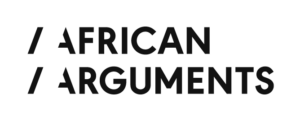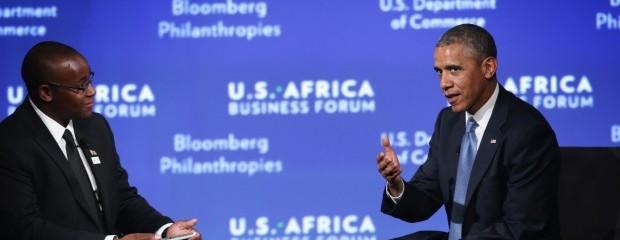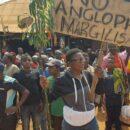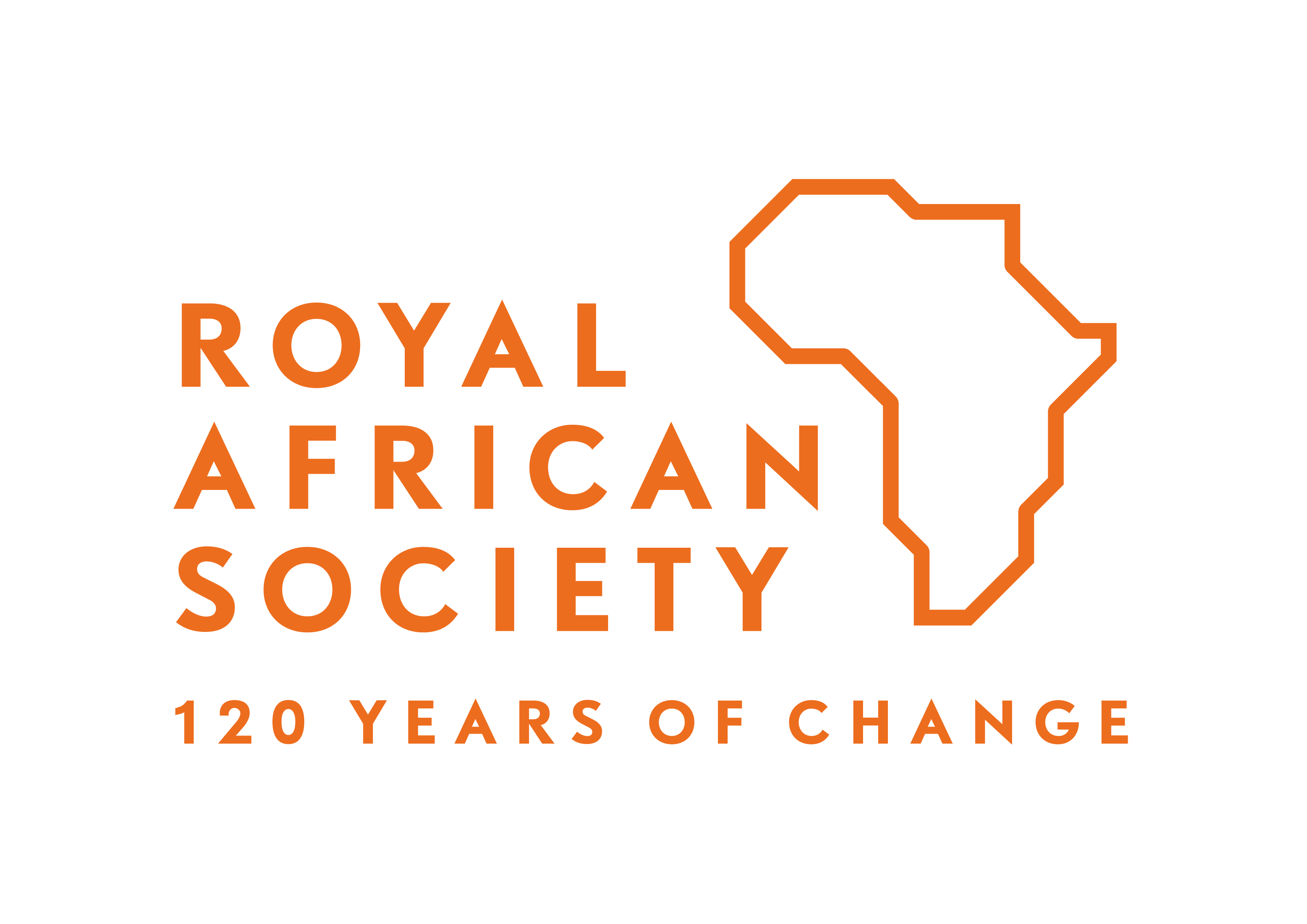Top Trends to Watch in sub-Saharan Africa’s Extractives Sector (part I) – By Rolake Akinkugbe

 From the West Africa Transform Margin (WATM) and the Mount Nimba iron-ore deposits straddling Cote d’Ivoire and Liberia to East Africa “˜s gas-rich Rovuma basin and southern Africa’s gold and diamond mines, no exploration frontier in Africa is out of reach for the reward-seeking and savvy investor. However the foreign private sector’s dual search for investment stability on the one hand and profit on the other means that its commercial interests will often need to be balanced against the strategic interests of African governments, given the socio-economic context of oil and mineral exploitation in the region.
From the West Africa Transform Margin (WATM) and the Mount Nimba iron-ore deposits straddling Cote d’Ivoire and Liberia to East Africa “˜s gas-rich Rovuma basin and southern Africa’s gold and diamond mines, no exploration frontier in Africa is out of reach for the reward-seeking and savvy investor. However the foreign private sector’s dual search for investment stability on the one hand and profit on the other means that its commercial interests will often need to be balanced against the strategic interests of African governments, given the socio-economic context of oil and mineral exploitation in the region.
The continent is resource-rich, hosting 30% of the world’s total hydrocarbons and mineral reserves; 12% of the world’s crude oil reserves, 42% of the world’s bauxite, 38% of uranium, 42% gold, 88% of diamonds, 44% of chromite, 82% of manganese, 95% vanadium, and so on. In 2012, according to UNCTAD, Foreign Direct Investment (FDI) flows into sub-Saharan Africa (SSA) were highest (above $3 billion) in Nigeria, Mozambique, South Africa, Democratic Republic of Congo (DRC), and Ghana. Worthy of note is that they are all resource-rich countries (oil, gas or minerals), thus underscoring the sector’s continued central role in attracting FDI to the continent.
Despite the clear push towards economic diversification, natural resources are likely to remain FDI priorities for the region, in the near-term. East Africa’s prime geographic location (for Asian markets in particular) is a key attraction for emerging Asian investors targeting hydrocarbons projects. In the East Africa region, due to recent hydrocarbons discoveries, Tanzania and Uganda have been foremost in attracting FDI.
FDI inflows for the East Africa region increased from US$4.6bn in 2011 to US$.3bn in 2012. In southern Africa, investors’ interest in Mozambique has been remarkable, and the country received an estimated $5.2billion in FDI on the back of world-class gas discoveries in 2012.
Mining has also become another hot cake; FDI flows to the Democratic Republic of the Congo (DRC) rose from $1.7 billion to $3.3 million in 2012 largely reflecting steady investment into the mining sector, including the copper-cobalt mines at Tenke Fungurume in the south-east. However, given the enormous infrastructure challenges involved in oil and mineral extraction in Africa, it is likely that up to 40% of FDI investment directed towards other sectors such as infrastructure and utilities is actually co-invested with oil and mineral FDI, suggesting that the latter will account for an even greater share of inflows into the region for the foreseeable future.
Against this backdrop, here are six important trends for investors to watch for in the extractives industry in the region:
The slow but gradual emergence of private equity (PE)
In the energy space in 2012, private equity (PE) accounted for an estimated 12% of global buyout deals, while the oil and mining sectors have accounted for nearly 46% of all cross-border Mergers & Acquisitions (M&A) in Africa by PE firms in the past four years. The private equity sector in Africa is, however, nascent.
Due to the relatively small and illiquid stock markets in SSA many PE funds will worry about exits. Moreover, the long gestation period of most exploration and production projects in the extractives sectors means that exits for oil, gas and mining have been as low as 3% each compared with exits in financial services which accounted for more than 20% of all exits in 2013.
Equity in financing generally allows extractives companies to more quickly access cash to finance their expansion and development plans. PE investments are slowly gathering momentum. In 2013, global asset manager, Carlyle Group stated that it had built a new team focused on energy investments in Africa.
A decade ago American Warburg Pincus and Blackstone Capital Partners (an affiliate of The Blackstone Group), two large private equity companies, provided US oil firm Kosmos Energy, which has a portfolio of African assets, with $300 million in capital. In June 2008, Kosmos secured an additional $500 million in equity funding, again from Warburg and Blackstone, making the company the first and largest private equity-backed oil and gas venture focused on Africa. The equity expanded Kosmos’ capital base and provided substantial financial resources for on-going oil and gas exploration, appraisal and development activities in West Africa, including the first-phase development of Ghana’s world-class Jubilee Oil Field.
As recently as June this year, Warburg Pincus announced that it would commit $600m to a new Africa-focused oil and gas explorer, India’s Delonex Energy, focusing on central and east Africa.
Meanwhile, the mining sector in Africa has typically relied on stock markets for funding. However, with some of the world’s largest mining companies pushing to sell assets and cut costs, following high profile asset write downs at the start of 2013, PE funds may be more swayed to invest in African mining prospects, with its high risk-high reward curve.
Globally, around $48 billion of mines and assets have been on the block for sale in 2013. PE investors accounted for 21% mining deal activity in the nine months to September 2012, against just 12 % for the same period in 2011. Of this, Africa’s share is even lower, and many would-be mining focused PE funds in Africa are generally put off by the long time lines that mineral extraction in Africa requires. Nevertheless, the PE investments that do exist in African mining hold a fairly diversified range of assets, with a diverse range of investor-region profiles – Europe, American and Asian.
New exploration frontiers
West Africa remains one of the world’s richest and most prospective hydrocarbons provinces. East Africa has also offered two highly prolific exploration zones – the rift system and the Rovuma basin – while the Gulf of Guinea’s traditional prospectivity has yielded even greater appetite for more complex plays in its terrain such as pre-salt plays off the Republic of Congo, Gabon, Angola and Namibia. This unyielding appetite for new frontiers has been accompanied by a general rise in Capex expenditure for oil and gas across the continent, with Africa likely to register an increase by the end of 2013 of close to 15%.
In 2012, SSA experienced the second-largest increase in both percentage and dollar terms in exploration activity in minerals. Despite global economic uncertainty, the budget for non-ferrous metals exploration increased to record levels in 2012, helping to underpin continued industry investment, including in SSA.
The continent’s global exploration budgets rose to 17% in 2012. The DRC remains the prime spot for exploration spending for the second consecutive year, an increased focus on West Africa translated into gold receiving the largest dollar increase in 2012 in places like Burkina Faso. Indeed, West Africa’s iron ore frontiers have been increasingly compared to Australia’s Pibara region, with a variety of investors pursuing new opportunities in the former.
Up to 20 mining companies have commenced iron ore projects in the region, as West Africa’s iron ore deposits are globally reputed to be high-grade, generally attracting low processing costs, due to the low levels of impurities found in them. Guinea’s Simandou region and Senegal’s Faleme region are two of the promising iron-ore frontiers in Africa, and deposits in both regions could run into scores of millions of tons.
Although mining companies find these types of ores extremely attractive (there is often no need to process them before export), the recent drop in global iron prices has raised questions about the sustainability of the new appetite for iron-ore frontiers in Africa. However, as many current investment decisions are based on long-term price estimates, it is likely that current prices for iron ore will have only a limited impact on the supply side and investors’ appetite.
Overall, mining exploration targets in Africa have focused primarily on Burkina Faso, Ghana, the DRC, Namibia, Tanzania, Botswana, Mali, South Africa and Zambia. Unlike the oil and gas sector, across the mining and metals sector exploration activity over the past year has been focused on identifying new mining frontiers, rather than expanding the resources at previous discoveries. Nevertheless, whilst Africa’s oil and mineral exploration frontiers have expanded in relative terms, in absolute terms global growth in finance available for exploration across the extractives sector has slowed, and Africa could still feel some of this impact
The missing infrastructure-resource link
Africa’s infrastructure gap continues to hamper resource development while, ironically, resource-based opportunities will primarily be the only ones with the requisite rents needed for the development of key infrastructure – energy, water and transportation – necessary for the development of other sectors such as agriculture.
In Mozambique, millions of dollars have been invested on the country’s rail infrastructure linking its remote coal fields with the country’s Beira port. Nevertheless, heavy rains flooded the rail line in February for two weeks, practically paralysing coal exports and forcing Brazilian mining giant Vale to declare a force majeure in May. Vale later went on to cut its 2013 export projection and is now expecting to export only 3.4 million tonnes a 30% fall from the 4.9 million tonnes earlier anticipated.
Infrastructure constraints also hampered exports at another Vale mine in Mozambique, but the expansion of the company’s coal production to 22 million tonnes by 2018 will largely hinge on a planned $4.4billion rehabilitation of the northern Nacala corridor, including repairs to its rail link to Malawi and the Nacala deep water port.
Across the continent, other projects are hampered by the lack of adequate infrastructure. Many resource projects remain “˜stranded’, warranting a renewed focus on cross-border infrastructure and resource corridors such as the Maputo Development Corridor (MDC) between Mozambique and South Africa. African governments have attempted to overcome the challenge of physical infrastructure and financing for such infrastructure by pursuing those deals that involve simultaneous mining and oil investments and infrastructure. One way they have attempted to tackle this is through innovative financing structures that attempt to tie resource exploitation to infrastructure development.
Many institutional projects are looking to phase out the “˜colonial’ – resources-to-coast framework for infrastructure development and are attempting to prioritise projects that focus on boosting regional integration, domestic and regional markets for Africa’s oil and mineral resources. Proposals to tackle the problem have been numerous, and have now centred on spatial development initiatives (SDIs) first pioneered by South African in 1995. SDIs have helped spur the development corridors and regional infrastructure initiatives such as the Maputo Development Corridor (MDC), the Central Development Corridor (CDC) in Tanzania Trans-African Highway or the LAPPSET project in East Africa.
Known more generally as “˜resource corridors’, these projects can often prove to be a hard-sell for investors due to the transnational negotiations and the financial commitments they involve. In a bid to eliminate the investment and political risks involved innovating financing techniques, such as public private partnerships (PPPs), are emerging and they help spread risk between public and private actors.
Part II will follow.
Rolake Akinkugbe is Head, Energy, Oil and Gas Research, Ecobank Group.






